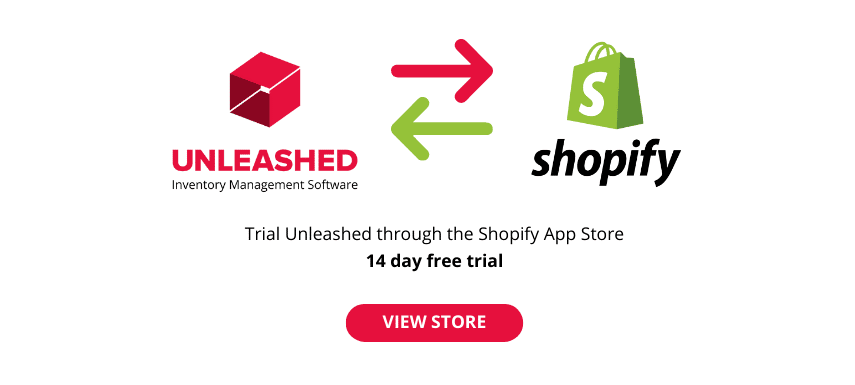
Multichannel eCommerce has exploded in the last few years, meaning those who embrace it – and do it well – will reap the rewards. So if you’re a business selling products through multiple outlets, multichannel inventory management should be an essential part of your sales strategy.
Here we explain what multichannel inventory management involves, why it’s so complex, and how you can give your operation a strong foundation with a robust inventory management system.
What is multichannel eCommerce?
Multichannel eCommerce is when your business makes sales via a number of different channels. These can include physical stores and/or online channels – such as marketplaces like Amazon, eCommerce platforms like Shopify and WooCommerce, and social media.
Multichannel selling was actually alive – but not so well – prior to the internet opening up our world. Traditional multichannel involved physical stores and B2B and B2C catalogues that allowed people to place orders over the phone – or even by fax.
We’ve come a long way since then, and multichannel online selling has become the norm for many businesses in a huge range of industries.
 Multichannel retail did exist before selling online became dominant – but the process looked very different, with sales made via telephone or fax machine
Multichannel retail did exist before selling online became dominant – but the process looked very different, with sales made via telephone or fax machine
The difference between single-channel, multichannel and omni-channel retail
The difference between single-channel and multichannel retail is how many sales channels are being used. If your business is using single-channel retail – for example, a business that only sells goods physically in store – then it is single channel.
The difference between multichannel and omni-channel is a little trickier.
For a business it’s the back-end of multichannel and omni-channel where a lot of the distinctions between the two lie. The clue is that omni means ‘all’, and with an omni-channel approach, all aspects of the marketing, selling, inventory management and distribution are consolidated into a single experience – for both the customer and business itself.
What is multichannel inventory management?
Also known as multi-source inventory, multichannel inventory management involves all the elements of managing stock across multiple locations and channels– from tracking sales to shipping, accounts, reordering and forecasting. In other words, it's inventory management that takes into account multiple sources of information.
The complexity of managing multichannel eCommerce means that having the right system in place is an integral part of multichannel eCommerce success.
 Multichannel retailing involves selling products or services through several channels, which may include bricks-and-mortar stores, online marketplaces and stores, and social media
Multichannel retailing involves selling products or services through several channels, which may include bricks-and-mortar stores, online marketplaces and stores, and social media
How does multichannel inventory management work?
Multichannel inventory can be effectively managed through one integrated software platform. It works by tracking all of the parts, products, and raw materials across various storage locations and combining that inventory data in a central location.
 A growing pot plant business provides an example of how inventory management can help streamline complex processes as your business scales and you increase the number of retail channels you use
A growing pot plant business provides an example of how inventory management can help streamline complex processes as your business scales and you increase the number of retail channels you use
The challenges of multichannel selling
It’s easy to see from the example above how quickly multichannel retail can become extremely challenging, especially when there are several locations to manage – including warehouses and retailers.
Complexities of multichannel inventory management
Here we dive deeper into what makes multichannel retail so complex, with six activities that often are a challenge for businesses:
1. Managing orders for various sales channels
When you have any number of retailers, stockists and direct customers wanting to order your product, you have to manage this manually – and as you do so, you have to ensure you don’t oversell any stock.
2. Ensuring quick fulfilment
In today’s fast-paced world, people want their orders quickly – that means yesterday, not today. If they are left waiting, and wondering where their item is, you could be losing out on future orders.
3. Predicting buyer behaviour
How can you know what products buyers may want, and when, if you aren’t capturing data that can help with forecasting buying behaviour? The tools are out there, and even if you’re not using them, your competitors most likely are.
4. Forecasting turnover rates
Calculating turnover rates is crucial for understanding where you may have issues in your supply chain and selling process. Do you have retailers who are holding onto stock for too long until it becomes unsellable? Or perhaps you need to invest in your marketing to improve your turnover rates when comparing them to industry averages.
5. Handling distribution
This is a big one! With goods going out and coming in from multiple locations, using various shipping providers and each sales channel having its own distribution policy, is it all working the way you expect it to? Are goods being delivered to the right person at the right time?
6. Meeting demand without oversupply
Having the right level of stock is a fine balance between having enough to meet demand, but not too much that it impedes on storage space, cash flow and profit. This is one of the main advantages of using inventory management – that is, it gives you a clear idea of what stock you have and what you need going forward.
 Ensuring quick fulfilment – which customers are increasingly demanding – while ensuring you maintain adequate stock levels is one example of how inventory software can support your multichannel retail strategy
Ensuring quick fulfilment – which customers are increasingly demanding – while ensuring you maintain adequate stock levels is one example of how inventory software can support your multichannel retail strategy
Benefits of multichannel inventory management
For almost every pain point you’ll find with multichannel retail, there’s an inventory management tool that can help solve it.
Here we focus on the most common problems businesses come across, and the solution that inventory software provides:
1. Sync inventory across platforms
In multichannel eCommerce, there is often the challenge of managing stock across various business platforms. This can lead to all types of inventory confusion, including time spent having to manually reconcile systems.
With the right inventory management system you can consolidate your information – giving you one single central source of truth.
2. Prevent overstocking and overselling
Two of the biggest risks when it comes to incorrect inventory management is overstocking and then not being able to sell the goods – or having to at a reduced rate.
Then there's the opposite problem, overselling and not having enough stock to meet fulfilment, which is extremely detrimental to brand and customer loyalty.
With the right multichannel inventory management in place, you have a real-time view of all stock levels as well as data insights that allow you to carry out accurate forecasting.
3. A single source for order information
Across multiple platforms, it can be hard to keep track of order information – but you'll also want this to be integrated with warehousing and distribution so you can track shipment and delivery.
From the moment a customer places an order, to precise fulfilment details, as well as a history of previous orders, the right platform takes you from end to end without having to switch systems or software.
4. Profit margins are easier to calculate
When businesses have any number of retailers and suppliers selling their products, calculating profit margins can cause plenty of headaches – especially if they’re discounted, or various expenses are applicable to some stock and not others (for example, if they have to get shipped further).
You can account for these factors easily with inventory management, giving you clear visibility of your profits.
5. Keep track of supplier trends and information
While you’re managing multichannel selling, you’re probably also trying to keep track of multiple suppliers. From lead times to any fulfilment issues and trends you should be across, these can be complicated without an automated system that takes care of the data for you.
And yes, you guessed it – multichannel inventory systems can transform all of that information into reports that can assist with all levels of decision-making.
6. Better warehousing
Whether you have one warehouse or many spread across various locations, it's extremely difficult to accurately keep your inventory data across them all manually.
With one central hub, everyone who needs to have access to stock details can have it in real time – helping to improve performance efficiencies.
7. Solve shipping and fulfilment problems
Tracking outgoing stock is a process in itself, but what about other kinds of inventory management – such as delayed and/or cancelled orders, returns because the wrong products were distributed, or exchanging items?
The procedure for capturing all of this information must be robust, otherwise you risk losing profits, time and customers – so it’s crucial to have a system you can rely on.
8. Inaccurate forecasting
If you’re using multiple systems to run your business – or none at all – there’s simply no way to accurately forecast future sales, consumer trends and anything else that can add value to your business’ daily operations.
Inventory management software should always come with these capabilities. If it doesn’t, stay clear.
9. Can’t keep pace with a growing business
Most people go into business with the aim of growing it and returning a healthy profit. But there are many challenges for a business that can’t keep pace with demand – and in today’s consumer-driven world, remain flexible and agile.
If your business is built on selling goods, it's absolutely essential to have the right tools at your fingertips, to ensure you can streamline processes, have full visibility of profit and loss, and scale when your business grows or contracts.
 Giving your customers different buying options and ensuring goods are in stock are both benefits of using inventory software to manage your multichannel retail, and these can benefit your business hugely
Giving your customers different buying options and ensuring goods are in stock are both benefits of using inventory software to manage your multichannel retail, and these can benefit your business hugely
How multichannel inventory management provides more value to your customers
From being able to see stock on hand, as well as effectively managing lead times, the right type of multichannel inventory management allows you to provide a better experience for your customers overall.
By being able to accurately track where shipments are, improving distribution times and exceeding expectations of service from sale to delivery, you can ensure your business and brand is using multichannel eCommerce in all the right ways.
Detailed and precise stock management can also lead to many other customer advantages, like bundling and cross-selling. With data on complementary goods that other customers are buying, you’re able to make relevant suggestions to customers as they shop – and gain more sales.
Consumers want to know they can rely on a business to have the goods they want, when they want it.
And if you’re able to tell them it will be on their doorstep in three working days, or they can pick it up from a local store that has five of the items in stock, you’re giving them the opportunity to choose which option works best for them.
Multichannel inventory management software
Multichannel eCommerce is an essential part of selling in today’s world. But multichannel inventory management comes with a myriad of challenges for those businesses who don’t have the foundation of proficient inventory software.
When you have the right application setup for your business, you will be able to track and sync inventory across multiple locations, as well as follow the end-to-end process of distribution, fulfilment and delivery. And it also takes a lot of the guesswork out of what will help your business to further streamline its processes and daily operations.
And while the idea of implementing a new software for your business may seem overwhelming, once it’s in place, you’ll be left wondering why you didn’t do it sooner.

